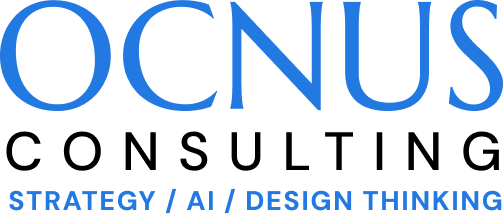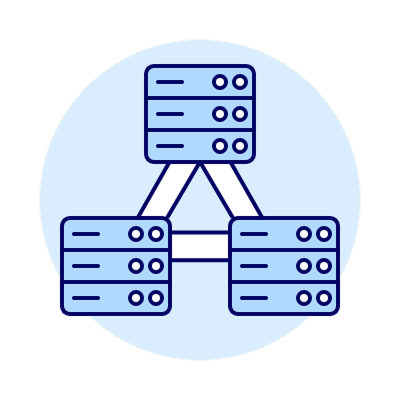
Artificial Intelligence at OCNUS
Strategy & Innovation
Artificial Intelligence refers to the simulation of human intelligence in machines designed to think, learn, and perform tasks that typically require human cognitive functions.
AI spans a wide array of technologies and applications, impacting industries such as healthcare, finance, education, and transportation.
In simple terms, AI enables systems to act intelligently, much like a human would.
AI Technologies
and
Techniques
AI relies on several advanced techniques to analyse data, recognise patterns, and automate processes.
(ML)
Machine Learning
A subset of AI where machines learn from data without explicit programming.
Example: AI models can analyse historical sales data to predict future trends.
(NLP)
Natural Language Processing
Enables computers to understand, interpret, and generate human language.
Example: AI chatbots and virtual assistants (like ChatGPT, Siri, and Google Assistant).
(CV)
Computer Vision
Allows AI to interpret and analyse visual data, such as images and videos.
Example: Facial recognition software and image classification systems.
How Does AI Work?
At its core, AI functions by using algorithms and vast amounts of data to identify patterns and make decisions. AI acts like an advanced learning assistant, improving its performance based on past experiences.
For example, when you interact with AI-powered virtual assistants like Siri or Alexa, these systems process voice commands, learn from previous interactions, and refine their responses over time.
Types of AI
Narrow AI vs. General AI
AI technology is broadly classified into two main categories:
Narrow AI (Weak AI)
Designed for specific tasks, such as voice recognition or recommendation algorithms.
Examples: Netflix’s recommendation system, Amazon’s product suggestions, and facial recognition software.
Strengths: Highly efficient but lacks general human reasoning abilities.
General AI (Strong AI)
A theoretical form of AI capable of learning, reasoning, and applying knowledge across different tasks—similar to human intelligence.
Current Status: Still under research, with no working examples yet.
The Impact
AI Across Industries
AI is transforming multiple industries, making workflows smarter, faster, and more efficient.
Healthcare: AI assists in diagnosing diseases by analysing medical images and patient data.
Finance: AI detects fraudulent activities and assesses credit risks, improving security.
Education: AI-powered personalised learning enhances the student experience.
Everyday Life: AI enhances recommendations (Netflix, Spotify) and automates customer service.
The Future of AI
Innovation & Human Oversight
As AI continues to evolve, its integration into business and society will deepen, unlocking new opportunities for innovation and productivity.
However, human oversight remains crucial. AI is not meant to replace human intelligence but to enhance decision-making, problem-solving, and creativity.
By understanding AI, we can harness its capabilities to improve productivity, enhance innovation, and navigate the future of technology with confidence.
Let’s Talk About the Future of Work
The world of work is changing.
Are you ready to lead the way?
Whether you're looking to enhance leadership, improve team performance, or rethink how your organisation works, OCNUS Consulting helps you navigate complexity with AI and human-centred Design Thinking.
Let’s start the conversation.
ROB LEACH
Founder OCNUS Consulting






